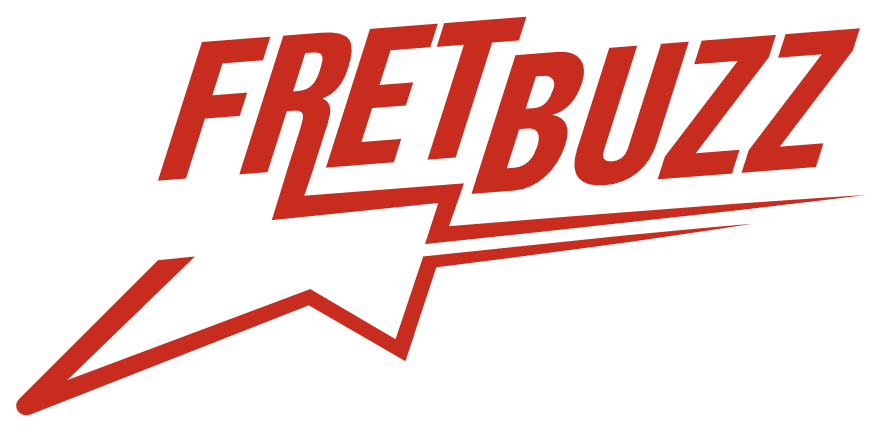Housed in an attractive shiny purple casing that’s about a foot long and two inches wide, the Leo Jaymz/Playwell Tank G ($79.99 on Amazon, plus a 15 percent discount with coupon) offers a compelling, affordable package for guitarists seeking a diverse range of tones in an easy-to-use pedalboard format. While it competes in a crowded market, the Tank G offers some features that are unavailable in many other multi-effect units, while delivering tones that are as diverse as they are satisfying.
The Tank G may not be built like a tank, but it’s pretty sturdy and offers four useful footswitches to toggle between presets, shift into a live, actively adjustable mode, program customized settings, and access a reliable silent tuner. Located above the switches are 15 small knobs that allow players to choose nine amp and nine cabinet types, add a noise gate, and set levels for three delays three reverbs, chorus, phaser, and tremolo. There are also knobs for bass, midrange, and treble.
The onboard controls provide a wide range of settings and tones. For players that want to dive deeper there’s a mobile app called the M-EFCS that’s not promoted on the company’s website, but which allows players to fine-tune the settings on the unit, access a variety of additional presets which can be downloaded into the pedal, and click a button to restore the Tank G to factory settings. Numerous websites and YouTube videos provide step-by-step instructions for tapping into these unadvertised settings, and significantly boosting the firepower of the Tank G.
Compared to pedals like the Zoom MG-50, the Tank G offers more refined and less clunky amp modeling. While the pricier Zoom offers a vast array of effects and features, the Tank G’s emphasis on amp tones and easily tweaked effects provides simpler access to basic, mostly authentic and solid sounds. The Sonicake Multi Effect Pedal has a similar price point to the Tank G, and provides analog emulations of amp tones, chorus, delay and reverb, but lacks the versatility of the Playwell pedal. And in contrast to the simpler Cuvave Cube Baby or the Lekato Multi Effects Guitar Pedal, which focus mostly on basic overdrives and sometimes unwieldy modulation, the Tank G delivers a broader, more precise sonic spectrum.
Even without the M-EFCS modifications, The Tank G’s 36 editable presets offer a good starting point for a variety of playing styles, with tones that are quite good (though some are better than others). While the preset library might not be as extensive as those of some competitors, the ability to customize sounds allows players to better tailor the pedal to their specific needs. And the inclusion of IR cab simulation adds an extra layer of realism to the amp models, a feature not always found in this price range.
For players looking to spend under $100 to instantly add diversity and depth to their playing (without having to tap dance on a voluminous pedal board), the Playwell Tank G is a solid option. The amp and cabinet emulations may not be exact, but they’re quite good and easy to dial in. There’s a wide variety of easily accessible presets, and a good selection of effects; players can even dial in how wet and dry they want their reverbs and delays to sound, a feature lacking in many similar pedals.
While some effect units require instruction manuals to be taped to the bottom, the Tank G doesn’t require memorizing multiple steps to switch from one amp function to the next. Also, it’s pretty hard to accidentally erase presets, yet not at all complicated to tweak or completely change them at will. With the addition of the W-EFCS app, the Tank G provides endless options for bedroom jamming, home recording, and even amateur band practice. However, as with most amp and effect modelers, most pros will prefer authentic tube amps and the individual pedals that best suit their guitar-playing needs.



can you put a microphone in this pedal for singing cheers.
trying hard to see if my shure sm58 microphone will work in tank g guitar pedal want a good sound is it possible for my mic to work in tank g
please help me with this thanks.
David,
The Tank-G features 1/4 inch in and out jacks, but is not designed for a mic. However, you could potentially use the Tank-G as an audio interface with a computer or other device that can accept microphone input. This would require connecting the Tank-G to your computer via USB and using appropriate software to capture the microphone signal. Hope that helps.